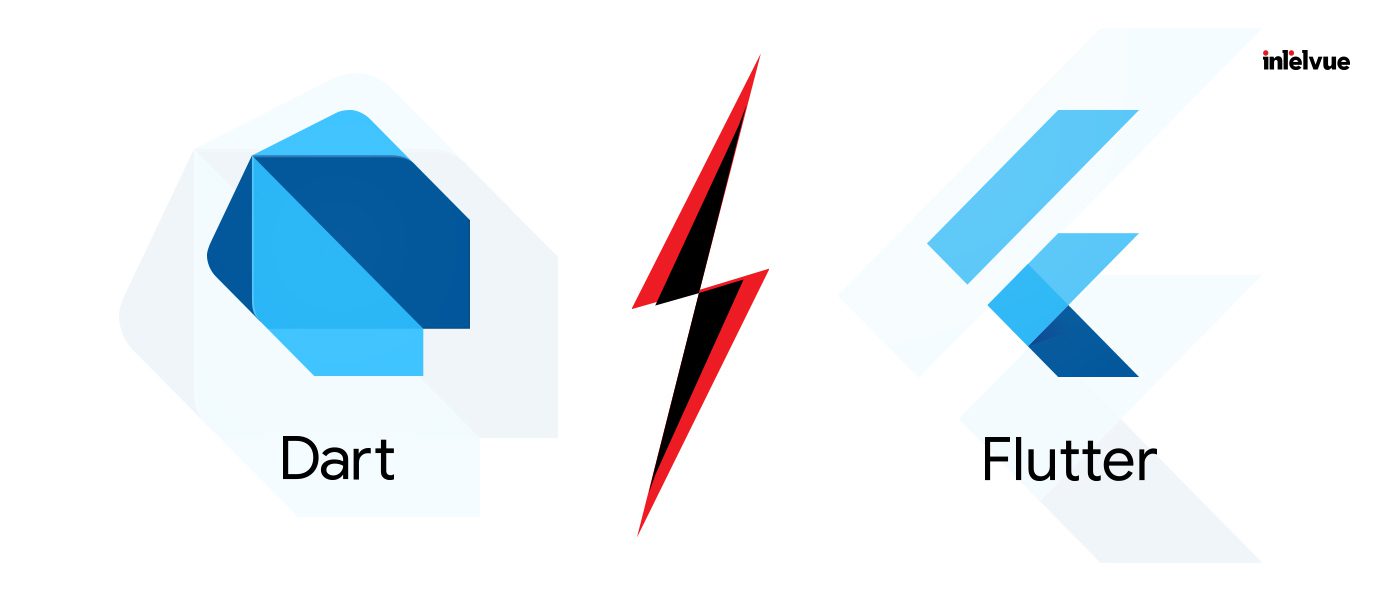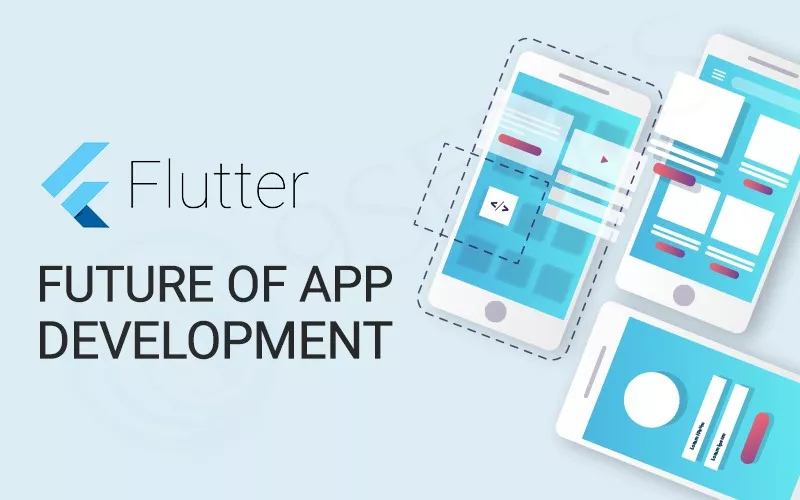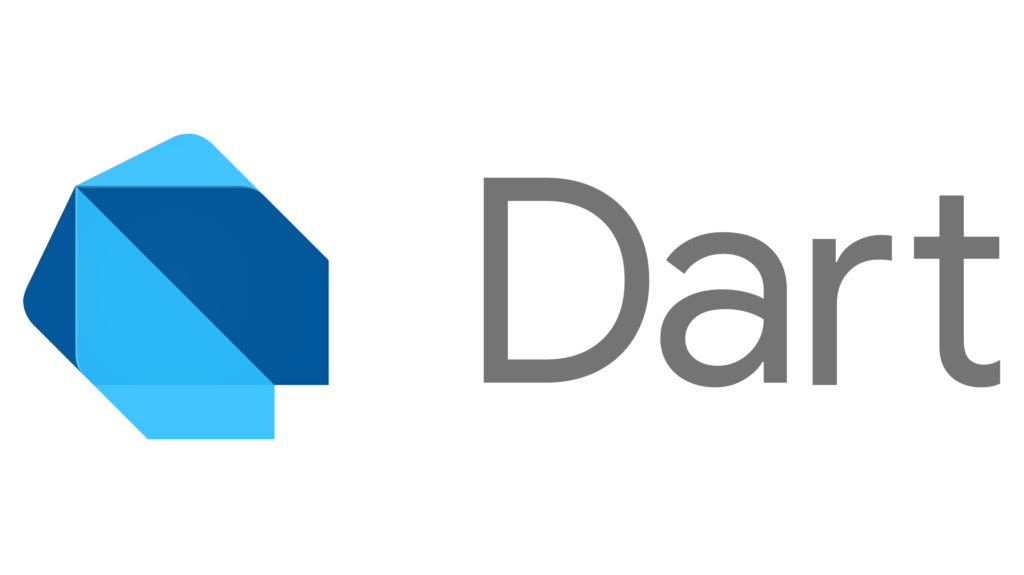
You may already be using apps based on Flutter. For instance, it could be for activities such as running a Google Ads campaign, redeeming a digital coupon, making purchases via Google Pay, or engaging in online shopping via Alibaba.
This blog post aims to provide insight into the future of Flutter and Dart. However, before we proceed, let us briefly examine the difference between web and mobile apps.
Difference between Web Apps and Mobile Apps
When we talk about web app vs. mobile app, we observe that web apps run on web browsers, while mobile apps run purely on mobile devices like tablets and smartphones. Therefore, any device with a web browser can access web apps, but you must download and install a mobile app from an app store or marketplace.
To offer a superior user experience and increased functionality, mobile apps can employ hardware and features native to the device, such as the camera, GPS, and accelerometer. On the contrary, web apps come with restrictions due to the limited capabilities of the web browser.
Furthermore, developing mobile apps requires platform-specific coding, but developers employ standard web technologies like HTML, CSS, and JavaScript to create a mobile application.
A professional and experienced software solution company can provide reliable app development services and web development services so businesses can serve their customers better.
Difference Between React Native and Flutter
Many people wonder about the Flutter vs. React Native debate. First, you should know that both are among the most popular cross-platform mobile app development frameworks available today. Flutter, which uses Dart as its programming language, is a brainchild of the world’s famous Google.
On the other hand, Facebook, now famous as Meta, developed React Native, which uses JavaScript. Each framework offers unique advantages and disadvantages.
Flutter provides a more uniform user interface and better performance than React Native. In addition, with its “hot reload” feature, developers can quickly test and iterate changes in real-time. Flutter also boasts a growing developer community and offers an impressive set of customizable widgets.
In contrast, React Native may be easier for developers familiar with web development to learn. It has a larger community and a more comprehensive range of third-party libraries and tools. React Native also offers smoother integration with native components and tools, which may be more suitable for specific use cases.
What is Flutter?
 In 2017, Google unveiled Flutter, which quickly became one of the fastest application development platforms. As the third most popular app development framework today, Flutter is an open-source high-level native UI platform for Android and iOS devices powered by Dart.
In 2017, Google unveiled Flutter, which quickly became one of the fastest application development platforms. As the third most popular app development framework today, Flutter is an open-source high-level native UI platform for Android and iOS devices powered by Dart.
Flutter simplifies app development for developers by offering a feature-rich user interface. It also provides reactive and declarative programming techniques comparable to React Native. Additionally, Flutter is a portable user interface toolkit with numerous widgets and features.
It allows programmers to easily create and distribute aesthetically pleasing, natively built applications for various platforms.
Top Features of the Flutter Framework
Back-end Support by Google
Developers using the Flutter framework can access Google Firebase’s back-end support, which allows them to create scalable apps.
Extensive Widgets Library
Using Flutter as a native app developer can combine various widgets to create an elegant and expressive user experience that meets the client’s requirements.
Real-time Changes
Flutter’s Hot Reload feature allows developers to see their changes in real-time on the screen. This functionality enables developers to add new features and fix bugs without concerns about memory limitations.
Robust UI
Flutter’s portable and well-structured Graphics Processing Unit or GPU rendering allows developers to work with multiple interfaces seamlessly.
Benefits of the Flutter Framework
Multi-Platform Codebase
Flutter enables developers to build robust enterprise-grade Android and iOS mobile applications using a single codebase, eliminating the need to write different codes for each platform. This approach allows for more efficient code management by developers.
Omni-Platform Support
Flutter stands out from other platforms by its ability to work across multiple operating systems, including iOS, Windows, Linux, Android, and macOS.
Robust MVP Model
After establishing the product foundation, Flutter can assist in creating a Minimal Viable Product (MVP) that highlights a website’s critical features and functionalities. With Flutter, you can develop a platform-agnostic MVP that delivers an exceptional user experience.
User-friendliness
The Flutter and Dart code combination is user-friendly and easy to comprehend. With Flutter, creating fully functional apps with less code is possible than other frameworks typically require. Additionally, installation is a breeze, and you can complete it in under 30 minutes thanks to the streamlined Flutter framework.
What is Dart?

Google introduced Dart as an open-source, platform-agnostic, object-oriented programming language that allows developers to create apps for both iOS and Android using the same codebase. Unlike React Native, Dart can connect with any platform directly through compilation, eliminating the need for a separate bridge.
Additionally, Dart is a client-side programming language that offers various tools for app development, such as dynamic typing, design capabilities, interface, classes, and optional typing. Dart is quite flexible in design, and you can use it to work on both the browser and the server.
Top Features of Dart Language
Active Developers Community
The Dart language benefits from a large and active development community, meaning developers can access many resources and support. In addition, the community can always offer assistance if you encounter issues or need guidance on implementing a feature.
Pre-Built Libraries
Numerous pre-built libraries such as Math, Convert, HTML, SDK, Core, and more are included with Dart, making it an advantageous programming language. Dart also allows developers to organize their code into separate libraries with proper details.
Security is the Key
Developers can rely on Dart to provide type safety, which means that you can check variables at both runtime and compile-time to ensure their value is always compatible with their static type.
This feature ensures that you can identify errors related to type mismatches early in the development process, helping developers create more stable and reliable code.
Versatile Features
Dart’s ability to compile code quickly makes it highly efficient. In addition, it supports both JIT (Just in Time) and AOT (Ahead of Time) compilation techniques, allowing developers to run the Dart programming language in web browsers efficiently.
Top Benefits of Dart Language
Ease of Learning and Documentation
Developers who have experience with Dart vouch for its excellent documentation and ease of learning. Dart offers a simple syntax, valuable functions, and helpful training guides, making it easy for developers to start coding.
Additionally, the Dart community is very supportive and readily available to assist with any questions or issues.
Exceptional Performance Boost
Dart can enhance the performance of your apps. That’s because of the two compilation techniques, JIT (Just in Time) and AOT (Ahead of Time), available in Dart. These features aid in the speedy and efficient execution of the application.
Easy to Run
Dart comes with a user-friendly interface called DartPad, which does not require installation or configuration. Developers can efficiently run their Dart code by writing it down and selecting the ‘Run’ instruction.
Easy to Use
Dart is an easily learnable programming language, making it accessible to anyone. Developers with experience with object-oriented programming basics can begin creating applications immediately using Dart’s Java-like syntax.
The simple ecosystem makes the learning process relatively easy. In addition, many libraries are available in the framework, allowing developers to understand the tools and terminologies quickly.
Flutter Expected to Grow in Popularity in Future
Flutter has emerged as a top-rated mobile app development solution in recent years due to its speed, flexibility, and efficiency. In 2023 and onwards, experts predict that the demand for cross-platform mobile app development solutions will continue to grow.
Flutter can also build apps for multiple platforms using a single code base, which will likely drive its adoption further.
Another factor that may contribute to Flutter’s growth is its focus on widgets, which simplifies the creation of beautiful, custom, and interactive user interfaces. In the coming years, experts expect Flutter to improve with new features and functionalities, including support for new platforms and devices and improved performance.
The growing popularity of the Dart programming language will also drive Flutter adoption. More developers will become familiar with the language, switching to Flutter as a development platform.
The Flutter community is also increasing and contributing to the framework’s growth, with more developers and companies contributing to Flutter, adding more features, tools, and libraries that make it more powerful and versatile.
Finally, the rise of the Internet of Things (IoT) will likely play a role in Flutter’s future. Its ability to work with various devices and platforms makes it ideally suited for IoT application development, which could lead to increased demand for Flutter in the IoT space.
Considering all these factors, the future looks promising for Flutter and Dart.
FAQs
What is the Best Way for Developers to Learn Dart and Flutter?
Learning Flutter is an easy task, even for beginners. With its simple syntax and user-friendly interface, anyone can start with Flutter. Dart is Google’s general-purpose programming language. Prior knowledge of Dart programming is required to learn Flutter. You can also learn Dart by watching videos, reading documentation and blogs, and practicing examples.
What is the Difference between Dart and Flutter?
Flutter is Google’s open-source and free UI software development kit, which enables developers to build high-performance, cross-platform apps for iOS, Android, and the web using a single codebase. Flutter utilizes Dart as its primary programming language, an open-source language developed by Google. By design, Dart is easy to learn, stable, and capable of creating high-performance applications.
What are the Future Expectations for Dart and Flutter?
Many well-known companies such as Alibaba, Google Ads, and Reflectly already use Flutter. As we move forward, we anticipate increasing companies choosing Flutter as their preferred framework for developing mobile and web applications. As a result, flutter and Dart will continue to grow and develop.
Is Flutter a Suitable Replacement for Native App Development?
While Flutter is a powerful platform for building cross-platform apps that can run on both Android and iOS, native app development is still required to create applications that require specific features or functionality unique to a particular platform. Even though Flutter provides several advantages over native app development, it is unlikely to replace it altogether.
Can I use Flutter for Enterprise App Development?
Flutter is suitable for enterprise app development because it offers several advantages. One of the most significant advantages is its ability to build cross-platform applications with a single codebase, saving companies time and resources. Additionally, Flutter has excellent performance and stability, essential for enterprise applications that handle extensive data and traffic. These benefits make Flutter attractive for businesses developing robust and efficient applications.